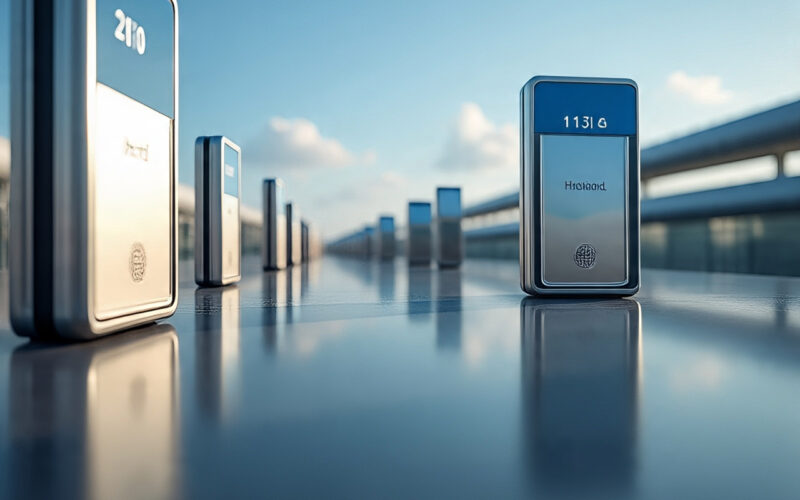#NHAI #MLFF #SmartTolling #DigitalIndia #FASTag #BarrierFreeTolling #AtmanirbharBharat #HighwayInnovation #GreenMobility #IndiaInfrastructure
New Delhi — In a major leap towards transforming India’s highway tolling system, the National Highways Authority of India (NHAI) has announced the launch of the country’s first Multi-Lane Free Flow (MLFF) tolling system. The initiative, set to be implemented at the Choryasi Fee Plaza on NH-48 in Gujarat, marks a paradigm shift from the conventional barrier-based toll plazas towards a seamless and efficient digital tolling ecosystem.
The agreement to initiate MLFF was signed between the Indian Highways Management Company Limited (IHMCL) — a subsidiary of NHAI — and ICICI Bank at NHAI Headquarters in New Delhi. The signing ceremony witnessed the presence of NHAI Chairman Shri Santosh Kumar Yadav, along with senior officials from NHAI, IHMCL, and ICICI Bank.
In addition to the Choryasi Fee Plaza, NHAI also signed an agreement with ICICI Bank for implementing MLFF at the Gharaunda Fee Plaza in Haryana on NH-44, highlighting the authority’s intent to expand this revolutionary model across the country. NHAI has further announced plans to implement MLFF at around 25 national highway fee plazas during FY2025-26, with the process of shortlisting sites already underway.
What is MLFF and Why It Matters?
The Multi-Lane Free Flow (MLFF) tolling system represents a barrier-free tolling mechanism that eliminates the need for vehicles to stop at toll booths. Instead, toll charges will be collected seamlessly through:
-
FASTag transactions integrated with vehicle movement.
-
High-performance RFID readers that automatically detect tags.
-
Automatic Number Plate Recognition (ANPR) cameras that read Vehicle Registration Numbers (VRN).
This system not only enhances user experience but also ensures real-time toll collection, transparency, and accuracy in revenue management.
Benefits for Road Users and the Economy
The MLFF model is expected to deliver a range of benefits to highway users and the broader economy:
-
Reduced Congestion – With vehicles no longer required to queue at toll plazas, traffic bottlenecks and long waiting times will be eliminated.
-
Time Savings – Seamless passage through toll plazas will save valuable time for commuters, commercial vehicles, and logistics providers.
-
Fuel Efficiency – Reduction in idling and frequent acceleration-deceleration at toll gates will improve fuel efficiency, directly benefiting vehicle owners.
-
Lower Emissions – Improved traffic flow translates to reduced vehicular emissions, aligning with India’s sustainability and climate goals.
-
Increased Revenue Transparency – Automated collection reduces leakages and ensures fair, transparent toll revenue.
-
Boost to Logistics Sector – Faster highway movement will improve efficiency in goods transport, cutting costs and enhancing supply chain productivity.
NHAI’s Vision for Technology-Driven Highways
Speaking on the occasion, NHAI Chairman Shri Santosh Kumar Yadav called the MLFF project a “significant milestone in the modernization of India’s highway tolling system.”
“By leveraging advanced technologies like RFID and ANPR, this initiative will establish the foundation for a smarter, transparent, and user-friendly tolling ecosystem. It aligns with our vision of using technology to transform national highway operations, improve user experience, and boost efficiency,” he said.
The Chairman also emphasized that the project will be a stepping stone toward a nationwide rollout of MLFF tolling across India’s vast highway network.
A Step Towards Smart Mobility and Atmanirbhar Bharat
The MLFF tolling system also supports the Government of India’s vision of smart infrastructure and Atmanirbhar Bharat (self-reliant India). By deploying cutting-edge indigenous technologies in tolling, India will join the ranks of advanced economies that have already adopted free-flow tolling systems.
Moreover, the partnership with ICICI Bank showcases the growing role of public-private collaborations in developing India’s transport infrastructure. Banks and technology providers are expected to play a pivotal role in expanding and scaling MLFF solutions across states.
Future Roadmap
While the Choryasi Fee Plaza in Gujarat will be the first to adopt MLFF, NHAI has made it clear that the technology will not stop here. Over the current financial year, 25 plazas are expected to shift to barrier-free tolling, and a phased nationwide adoption is on the cards in the coming years.
Experts also highlight that the introduction of MLFF can complement India’s upcoming GPS-based tolling system, where tolls may be charged based on actual distance traveled rather than fixed plaza points. The synergy of MLFF with GPS tolling could redefine highway travel in India, making it more efficient, fair, and globally competitive.
Conclusion
The launch of India’s first MLFF tolling system is a watershed moment in the modernization of India’s road infrastructure. By prioritizing speed, efficiency, transparency, and environmental sustainability, the initiative is set to transform the way millions of Indians experience highway travel.
With Choryasi Fee Plaza in Gujarat leading the way, and several others to follow soon, India is gearing up for a future where highway journeys are faster, greener, and hassle-free.
Hashtags
#NHAI #MLFF #SmartTolling #DigitalIndia #FASTag #BarrierFreeTolling #AtmanirbharBharat #HighwayInnovation #GreenMobility #IndiaInfrastructure

